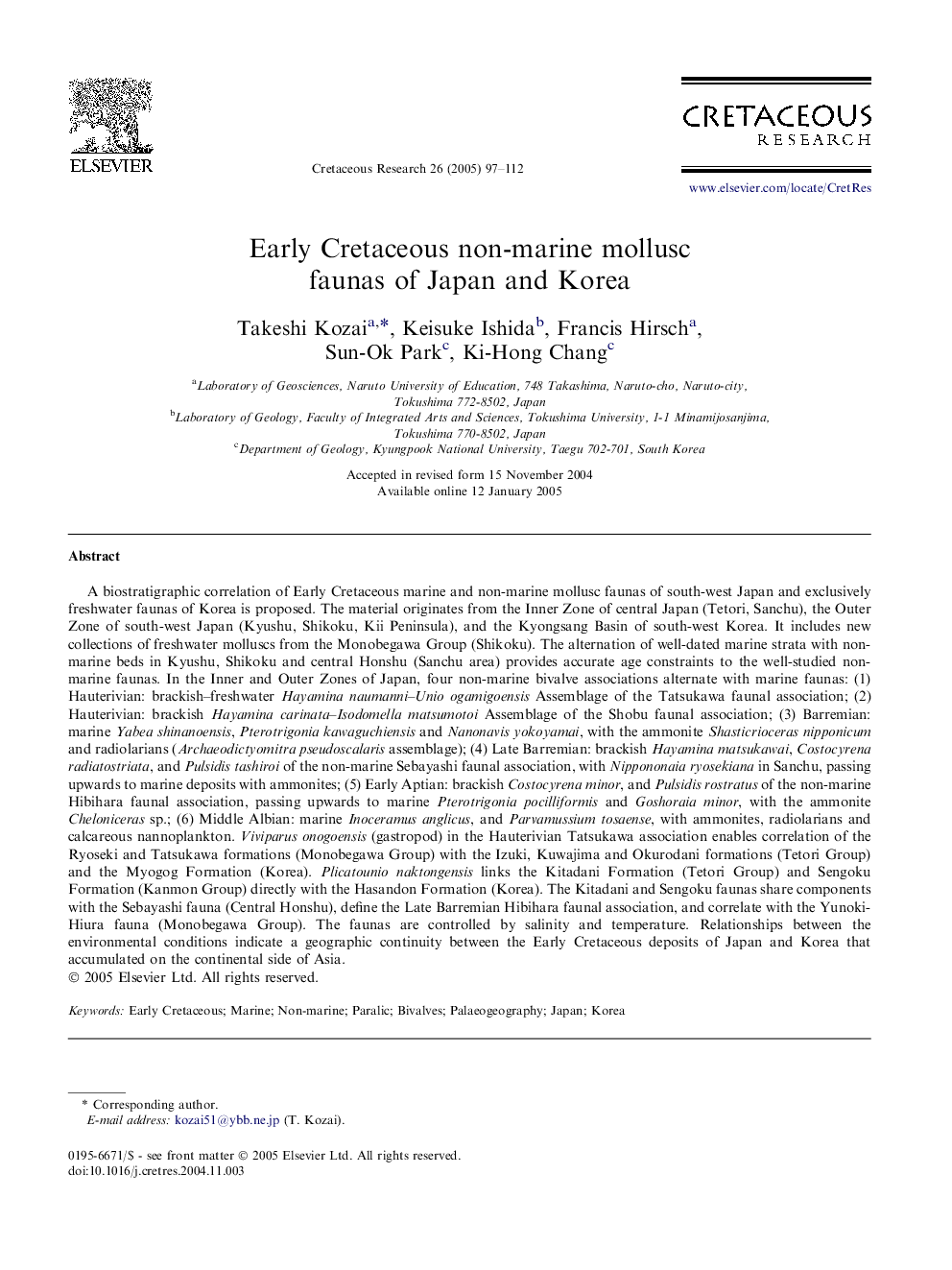| Article ID | Journal | Published Year | Pages | File Type |
|---|---|---|---|---|
| 9538994 | Cretaceous Research | 2005 | 16 Pages |
Abstract
A biostratigraphic correlation of Early Cretaceous marine and non-marine mollusc faunas of south-west Japan and exclusively freshwater faunas of Korea is proposed. The material originates from the Inner Zone of central Japan (Tetori, Sanchu), the Outer Zone of south-west Japan (Kyushu, Shikoku, Kii Peninsula), and the Kyongsang Basin of south-west Korea. It includes new collections of freshwater molluscs from the Monobegawa Group (Shikoku). The alternation of well-dated marine strata with non-marine beds in Kyushu, Shikoku and central Honshu (Sanchu area) provides accurate age constraints to the well-studied non-marine faunas. In the Inner and Outer Zones of Japan, four non-marine bivalve associations alternate with marine faunas: (1) Hauterivian: brackish-freshwater Hayamina naumanni-Unio ogamigoensis Assemblage of the Tatsukawa faunal association; (2) Hauterivian: brackish Hayamina carinata-Isodomella matsumotoi Assemblage of the Shobu faunal association; (3) Barremian: marine Yabea shinanoensis, Pterotrigonia kawaguchiensis and Nanonavis yokoyamai, with the ammonite Shasticrioceras nipponicum and radiolarians (Archaeodictyomitra pseudoscalaris assemblage); (4) Late Barremian: brackish Hayamina matsukawai, Costocyrena radiatostriata, and Pulsidis tashiroi of the non-marine Sebayashi faunal association, with Nippononaia ryosekiana in Sanchu, passing upwards to marine deposits with ammonites; (5) Early Aptian: brackish Costocyrena minor, and Pulsidis rostratus of the non-marine Hibihara faunal association, passing upwards to marine Pterotrigonia pocilliformis and Goshoraia minor, with the ammonite Cheloniceras sp.; (6) Middle Albian: marine Inoceramus anglicus, and Parvamussium tosaense, with ammonites, radiolarians and calcareous nannoplankton. Viviparus onogoensis (gastropod) in the Hauterivian Tatsukawa association enables correlation of the Ryoseki and Tatsukawa formations (Monobegawa Group) with the Izuki, Kuwajima and Okurodani formations (Tetori Group) and the Myogog Formation (Korea). Plicatounio naktongensis links the Kitadani Formation (Tetori Group) and Sengoku Formation (Kanmon Group) directly with the Hasandon Formation (Korea). The Kitadani and Sengoku faunas share components with the Sebayashi fauna (Central Honshu), define the Late Barremian Hibihara faunal association, and correlate with the Yunoki-Hiura fauna (Monobegawa Group). The faunas are controlled by salinity and temperature. Relationships between the environmental conditions indicate a geographic continuity between the Early Cretaceous deposits of Japan and Korea that accumulated on the continental side of Asia.
Related Topics
Physical Sciences and Engineering
Earth and Planetary Sciences
Palaeontology
Authors
Takeshi Kozai, Keisuke Ishida, Francis Hirsch, Sun-Ok Park, Ki-Hong Chang,
